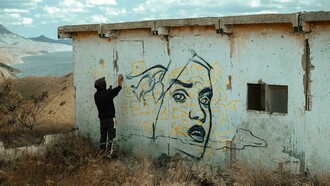(Félix Vallotton)
Black and white are the two most fundamental elements of the colour spectrum. Beyond colour, they appear in idiomatic expressions to convey the two opposing sides of truth, personal character, logic, and morality. Footprints of history, after all, emerged from black and white—in print, television, film, photography and other media of communication. Although the introduction of colour into our lives has opened a wider horizon of varied interpretations of emotion, mood and light, black-and-white visual imagery may often pervade a deeper and stronger impact on the mental and emotional presence. In many cultures around the world, black represents death, evil, darkness, or power and prestige; while white symbolizes innocence, purity, unity, and allegiance. These contrasting perceptions affirm clarity and accuracy to any observer who can discern objects, pictures and abstract matter with a more straightforward opinion, rather than the influence of the supplementary effects of colour.
Swiss-French painter and printmaker Félix Vallotton (1865–1925) was evidently such an artist who devoted his works to the articulation of black and white images. As an active member of the French avant-garde group Les Nabis, he was highly recognized for the development of the modern woodcut, which embodied his themes in still lifes, landscapes, portraits, nudes, day-to-day life scenes, and other subjects drawn in a captivating combination of flat and naturalistic manner.
Ongoing until January 29, 2023, Félix Vallotton—Noir et Blanc is being presented at Mitsubishi Ichigokan Museum, Tokyo. Showcasing the phenomenal artist’s huge collection of about 180 works, the exhibition includes Vallotton’s rare series Intimités, Instruments de musique, L’Exposition Universelle and C’est la guerre, and selected works by Henri Toulouse-Lautrec and other Nabis artists.
Born in Lausanne, Switzerland, Vallotton graduated with a degree in classical studies in 1882 and attended drawing classes for advanced students. His classical education may have honed his adept skills in realism and close observation of subjects. After graduation, he persuaded his parents to allow him to pursue further art studies in Paris. While enrolled at Académie Julian, Vallotton increasingly perfected his technical hand in painting, spending long hours at the Louvre. Here, he intently admired the works of Da Vinci, Holbein, Dürer, Goya, Manet, and particularly Ingrés whom he considered his critical model throughout his life.
As early as the age of 16, Vallotton began presenting his portraits to the Paris Salon. He continued to do so in the succeeding years, to the Salon des Beaux-Arts in Geneva, and to the 1889 Paris Universal Exposition.
Vallotton produced his first woodblock prints in 1891. They depicted his most revered personages and mountain sceneries of Switzerland. Most of his early prints showed linear expressions, then gradually emphasized hard edges and objects as black masses. This distinctive style was highly noticeable during his days as a Nabis artist. In The 1st of January (1896), Vallotton creates a parodical scene of the French society’s broad economic gap, represented by a well-dressed, bourgeois family walking leisurely while beggars flank on both sides of the street. The man on the left and the woman holding a baby on the right stretch out their hands for alms. The symbol of poverty is outlined in firm, black lines framed around white figures, and wealth in strong, flat black, including the background. The rendering stresses two significant contradictions. Throughout the exhibition, the artist’s keen observation of everyday scenarios in cafés, parks, department stores, and train stations, as well as realities of politics, crime, sickness, celebrations and death are scrutinized profusely with honesty, satire and humour at the same time. Vallotton successfully accentuated monochrome colours to bring out the attributes and inner nature of his characters.
One of the especially amusing sections in the exhibition is the artist’s popular “Intimacies” series, which he produced in the late 1890s. He developed an intriguing passion for capturing intimate interior settings that steal private moments between couples and loners. The alluring images exaggerate black areas that seem to overpower the white parts silhouetted in black lines. The body angles and facial expressions emanate hidden emotions, otherwise camouflaged by delusion, tolerance, or unrest.
The Lie (1897) splendidly juxtaposes the intertwining curves of the male and female bodies against the vertical lines of the wallpaper design. The woman cuddles tenderly, yet the man looks downward, as though feeling detached. Vallotton reflects on the tumultuous time in Paris when the city was caught between modernity and political turmoil and manifests the restless ambience in the interior stage.
Perhaps considered as Vallotton’s most highly praised woodcut prints, Laziness (1896) amorously personifies an indolent woman, reclining naked in bed, completely in white, while surrounded by playful, ornate patterns in patchwork-like geometric designs. This exceptional work asserts Vallotton’s undoubted mastery of the art of monochrome curvilinear decorativeness, closely linked with Art Nouveau.
As black and white delineate reversal effects, so do Vallotton’s creative masterpieces, which narrate multifarious ironies in human life, sometimes lost in verity or illusion.















